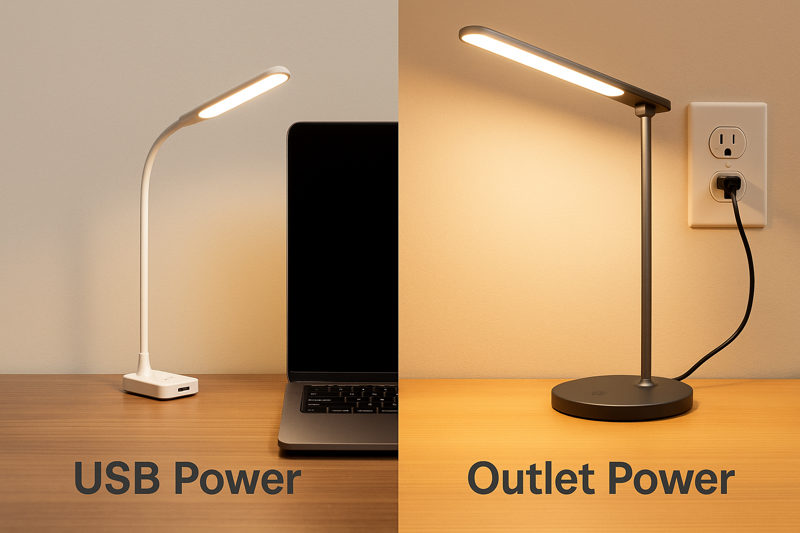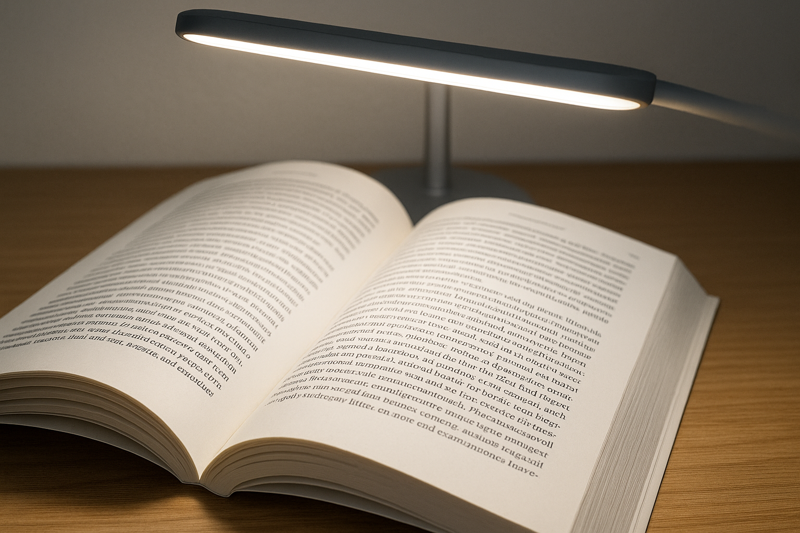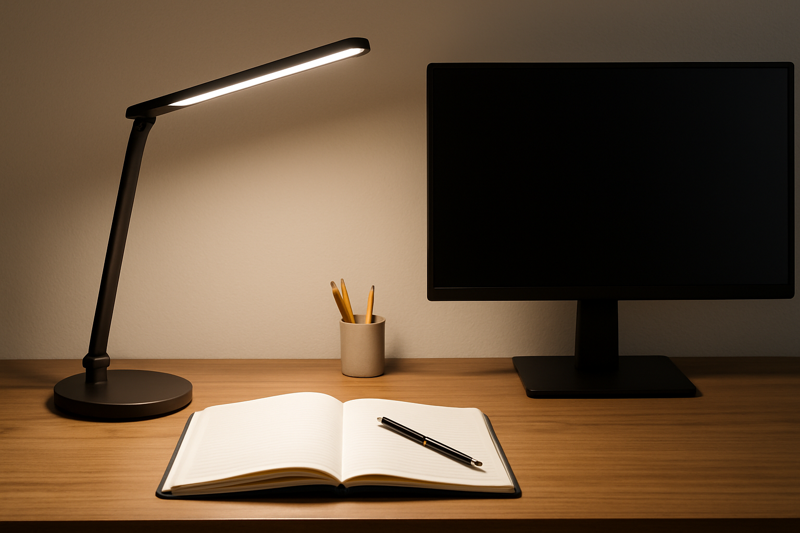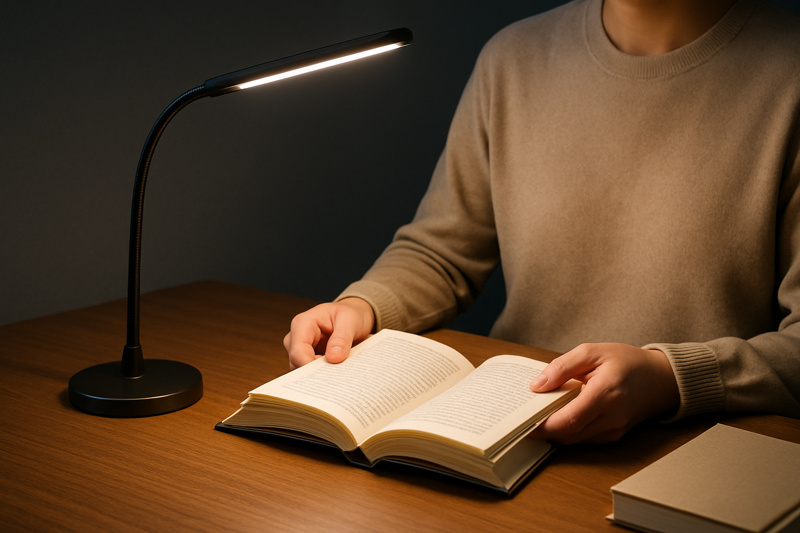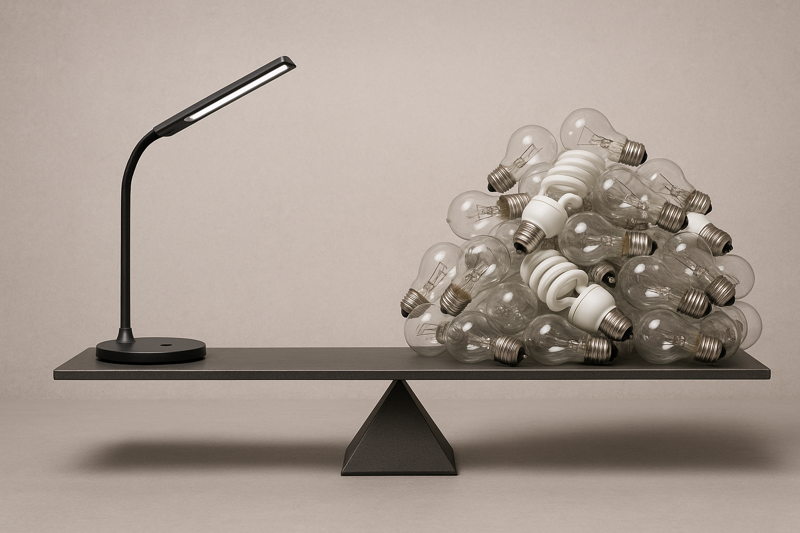
Do you get headaches after long hours of reading or working? Your desk lamp might be the culprit, causing invisible strain. A truly eye-caring lamp offers advanced, stable lighting.
A genuinely eye-caring LED desk lamp provides stable, flicker-free, and non-glare illumination. Key features include adjustable brightness and color temperature, a high Color Rendering Index, and versatile physical adjustability.
Let's dive into the essential features that separate a truly protective lamp from a standard one.
Why Do So Many "Eye-Caring" Lamps Still Cause Headaches and Strain?
You bought a lamp advertised as "eye-caring," but still feel fatigued. The problem is often invisible flicker and harsh glare. Advanced lighting technology eliminates these hidden sources of eye strain.
Many lamps cause eye strain due to imperceptible flicker (strobe effect) and direct glare. Choosing a lamp with advanced technology that guarantees "no glare, no strobe" is crucial for genuine eye protection.
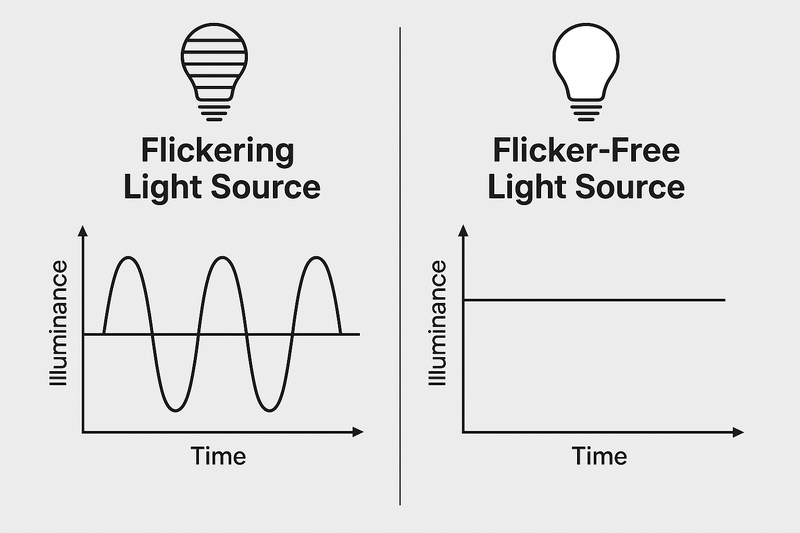
As the Marketing Manager at Royelamp, I talk to product managers and buyers every day. A common pain point they share is customer feedback about headaches, even with so-called "healthy" lighting. The truth is, many lamps fail to address the two biggest hidden culprits: flicker and glare. It's why our design philosophy is built around "advanced lighting technology" that provides "no glare no strobe, soft lighting eye protection." It’s not just a feature; it's the foundation of a product that genuinely cares for the user's well-being, which is a key requirement for my clients seeking reliable suppliers.
The Hidden Menace of Flicker
Flicker, or a strobe effect, is a rapid, often invisible fluctuation in a light's brightness. Your conscious mind might not see it, but your brain and eye muscles are working overtime to process the unstable signal. This constant micro-adjustment is exhausting. It's a primary cause of eye strain, headaches, and can even impact concentration. Quality eye-caring lamps use superior power drivers that deliver a consistent current to the LEDs, completely eliminating this "strobe" effect. The result is a steady, unwavering beam of light that is genuinely "soft" and easy on the eyes for hours on end.
The Obvious Problem with Glare
Glare is more straightforward but just as harmful. It occurs in two forms. Direct glare is when the bright light source shines directly into your eyes. Indirect glare is when that light reflects off a shiny surface, like your computer screen, a glossy book, or even your desk. Both cause you to squint and can lead to discomfort and visual fatigue. A truly eye-caring lamp combats this in two ways:
- Light Diffusion1: It uses diffusers, like soft silicone covers over the LEDs, to create a uniform, soft light instead of harsh, pinpointed light.
- Full Adjustability: It allows you to direct the light precisely onto your work area and away from your eyes and screen, a feature we will explore more deeply.
| Eye Strain Culprit2 | How It Causes Discomfort | The Solution in an Eye-Caring Lamp |
|---|---|---|
| Flicker (Strobe) | Forces eye muscles to constantly readjust, causing fatigue. | Advanced technology ensures "no strobe" for stable, continuous light. |
| Direct Glare3 | Light shines directly into eyes, causing discomfort and squinting. | Diffusers for "soft lighting" and an adjustable lamp head. |
| Indirect Glare | Light reflects off surfaces like screens or glossy paper. | Multi-angle rotation to position light perfectly on the task. |
By addressing these core issues, a lamp moves from being a simple light to a true tool for visual health.
How Can Adjustable Light Settings Transform Your Visual Comfort?
Do you use the same harsh, bright light for both intense work and evening reading? This one-size-fits-all approach strains your eyes. Tailoring your light to your task is the solution.
Adjustable light settings, including stepless dimming and multiple color temperature modes, are essential for eye health. They allow you to customize illumination for different tasks and times of day, reducing strain.
%[Hand using a touch control to slide through different color temperatures on a lamp base](https://royelamp.com/wp-content/uploads/2025/07/touch_control_color_temp_800x533.png"Adjustable Color Temperature and Brightness Controls")
I often work late, and my tasks change throughout the evening. Early on, I might need bright, cool light to analyze spreadsheets. Later, I'll switch to a warm, dim light to review printed materials before logging off. Using the same light setting for both activities would be incredibly uncomfortable. This is why, at Royelamp, we champion customizable lighting. A "touch adjustment color temperature" and an intuitive "sliding dimmer" aren't just fancy features; they are ergonomic tools that allow the user to adapt the light to their biological needs, which is a massive selling point for our B2B clients.
Brightness on Your Terms: The Power of Stepless Dimming
Many basic lamps offer only a few preset brightness levels—low, medium, and high. This is often inadequate. The ideal brightness changes depending on the ambient light in your room and the specific task at hand. A superior eye-caring lamp features a "sliding dimmer," which allows for stepless adjustment. This means you can slide your finger to find the exact level of brightness you need, making the "adjustment more intuitive." This precise control is critical for minimizing eye strain by preventing your eyes from constantly struggling between a too-bright lamp and a darker room.
Color Temperature: Matching Light to Your Body's Clock
Color temperature4, measured in Kelvin (K), refers to the color of the light, from a warm, cozy yellow to a cool, crisp blue-white. This is perhaps the most powerful tool for eye comfort.
- Cool White (5000K-6000K)5: Mimicking bright daylight, this setting is perfect for tasks requiring high concentration and focus.
- Neutral White (around 4000K): A balanced, natural light that's great for general reading and everyday tasks.
- Warm White (around 3000K)6: A relaxing, yellowish light that's ideal for casual reading and unwinding in the evening. It has less blue light, which can help your body prepare for sleep.
A lamp that offers multiple color temperature modes gives you the power to create the perfect lighting environment for any situation.
| Color Temperature (CCT) | Description | Best For | Impact on Eye Health and Mood |
|---|---|---|---|
| 5000K - 6000K | Cool, blue-white light | Focused work, studying, detailed tasks | Boosts alertness and concentration. |
| 4000K - 4500K | Neutral, natural white | General use, reading, everyday computer work | Provides clear, balanced, and accurate light. |
| 3000K - 3500K | Warm, yellowish light | Relaxing, casual reading, evening use | Creates a cozy atmosphere, reduces blue light exposure. |
This level of control allows you to support your eyes and your natural circadian rhythms throughout the day.
Does the Physical Design of a Lamp Actually Affect Eye Health?
Is your lamp a rigid fixture that creates annoying shadows or reflects glare off your screen? A static lamp can't adapt to your needs. A flexible, multi-angle design puts you in control.
A lamp's physical design is critical for eye health. Features like multi-angle rotation and a foldable structure allow you to position the light source perfectly, eliminating shadows and indirect glare.

I once spoke with a product manager for an office supply company who was sourcing lamps for a large architectural firm. Their number one requirement wasn't brightness; it was adjustability. Architects work on large drafting tables and need to eliminate every shadow. This highlights a crucial point: the best light in the world is useless if you can't put it in the right place. That's why features like a "three-dimensional and omni-directional lighting angle" are central to our design process at Royelamp. The lamp must adapt to the user's environment, not the other way around.
The Power of Perfect Positioning
A fixed, unmoving lamp is a primary cause of visual discomfort. If you can't change the light's position, you are forced to move your work, your monitor, or even your own body to avoid shadows and screen glare. A highly adjustable lamp solves this problem. The ability to direct the light exactly where you need it is the most effective way to combat indirect glare, which is the annoying reflection from your screen, desk, or glossy paper.
Key Adjustability Features to Look For
A truly ergonomic lamp will offer several points of articulation. Look for specific capabilities mentioned in the product details:
- Lamp Head Rotation7: The ability for the lamp head to swivel side-to-side, sometimes up to "180° rotation," allows you to move the light pool across your desk without moving the lamp's base.
- Lamp Head Folding: The ability to tilt the head up and down, often through "180° folding," lets you fine-tune the angle to prevent the light from shining into your eyes or onto your monitor.
- Arm Folding8: Joints at the base or middle of the arm, allowing for "90° folding," give you control over the height and reach of the light.
- A "folding structure" overall also means the lamp has a "smaller volume" for easy storage, a great secondary benefit.
| Adjustability Feature | Motion Description | Practical Eye-Care Benefit |
|---|---|---|
| Lamp Head Rotation | Pivots left and right (e.g., 180°) | Moves light away from your screen to prevent indirect glare. |
| Lamp Head Folding9 (Vertical) | Tilts up and down (e.g., 180°) | Changes the angle and size of the light pool, reducing shadows. |
| Lamp Arm Folding | Base and arm joints bend (e.g., 90°) | Adjusts the height and reach of the light source for any task. |
This mechanical flexibility is just as important as the electronic features for all-day visual comfort.
What Is the Unseen Quality Factor That Determines True Eye Protection?
Have you ever noticed that colors look dull or "off" under your desk lamp? This distortion can subtly strain your eyes. High-quality light sources reveal true colors, reducing visual effort.
A key factor for eye protection is the Color Rendering Index (CRI), which measures how accurately a light source reveals colors. A lamp with a CRI greater than 80Ra ensures vibrant, natural light.
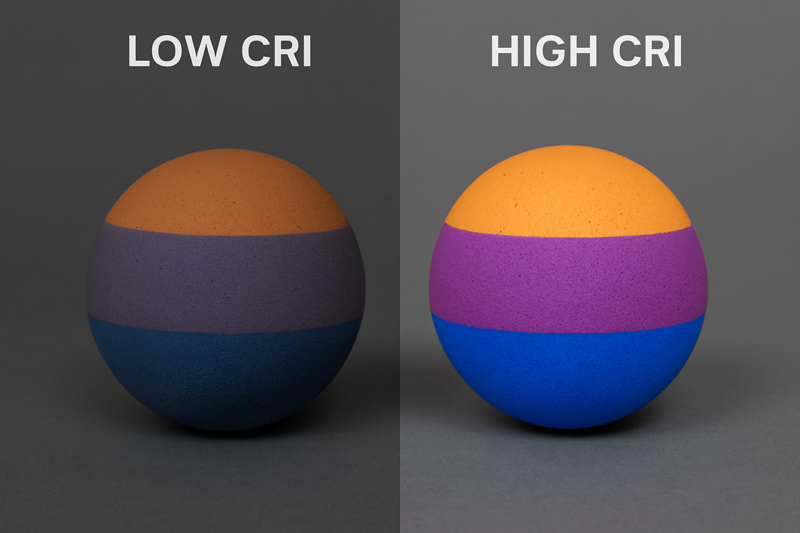
Early in my career, I was approving a product brochure under the office lights. The colors looked perfect. But when I saw it the next day in natural sunlight, the colors were completely wrong. The poor-quality office lighting had distorted my perception. This is what happens on a smaller scale every day at our desks. When a light source shows colors inaccurately, our brains have to work harder to compensate, leading to fatigue. This is why a high Color Rendering Index (CRI) is a non-negotiable feature for the eye-caring lamps we produce at Royelamp.
Demystifying the Color Rendering Index (CRI)
CRI is a simple score from 0 to 100 that measures how well a light source renders colors compared to natural sunlight. A low CRI light makes colors look washed out and unnatural. A high CRI light makes them look vibrant and true. For a desk lamp, you should look for a CRI of ">80Ra" or higher. This ensures that the light is clear and natural, reducing the strain on your eyes and brain, especially for tasks involving color, like design, art, or even just reading a colorful textbook.
The Quality and Lifespan of the LED Source
A high CRI is a direct result of using high-quality LED chips. But quality goes beyond just the initial performance. Cheaper LEDs are prone to "light decay," meaning they lose their brightness and color accuracy over time. A lamp that was great out of the box might become a source of eye strain a year later. A sign of a quality product is an "ultra-long life" rating, often 20,000 hours or more. This indicates that the manufacturer has used durable components designed to provide consistent, high-quality, eye-protecting light for years, not just months.
| Quality Metric | What It Means | Why It's Crucial for Eye Health |
|---|---|---|
| CRI > 80Ra | The light shows colors accurately and naturally. | Reduces the cognitive load on your brain, minimizing eye fatigue. |
| Minimal Light Decay | The lamp maintains its brightness and quality over its lifespan. | Ensures consistent, reliable eye protection for the long term. |
| Long Lifespan | The LED chips are rated for long operational life (20,000+ hrs). | A marker of high-quality components and a better investment. |
Looking for these markers of unseen quality is how you find a product that is truly built for eye health.
Conclusion
Choosing an eye-caring lamp means looking for flicker-free technology, full adjustability of light and position, and high-quality, high-CRI LEDs.
-
Discover how light diffusion techniques can enhance your workspace lighting and protect your eyes from discomfort. ↩
-
Learn about various eye strain culprits and effective solutions to maintain visual health in your daily activities. ↩
-
Understanding direct glare is crucial for improving visual comfort and reducing eye strain. Explore this link for detailed insights. ↩
-
Understanding color temperature can enhance your lighting choices, improving comfort and productivity in your environment. ↩
-
Exploring the benefits of Cool White lighting can help you optimize your workspace for better focus and efficiency. ↩
-
Discover how Warm White lighting can create a calming atmosphere, aiding in relaxation and preparing for sleep. ↩
-
Understanding lamp head rotation can help you choose a lamp that minimizes glare and enhances comfort while working. ↩
-
Learning about arm folding can help you find a lamp that offers customizable height and reach for optimal lighting. ↩
-
Exploring lamp head folding features can guide you to a lamp that effectively reduces shadows and eye strain during use. ↩


